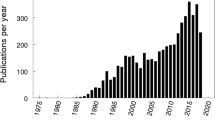Summary
Bioelectrical impedance is a reliable, safe, non-invasive and valid method of determining body composition, using measures of resistance and reactance by passing a low voltage alternating current through the body. This study investigates relationships between the pharmacokinetics of theophylline and parameters of bioelectrical impedance in 15 nonsmoking, healthy, adult male volunteers. After an overnight fast, subjects received 5 mg/ kg of aminophylline intravenously over 30 minutes. Blood samples were obtained serially over a period of 12 hours. Bioelectrical impedance measurements were made in triplicate, using a 4-electrode plethysmograph. Sera were assayed in duplicate by enzyme-mediated immunoassay (coefficient of variation < 5%), and data were fitted to a non-compartmental regression program. An all-subsets multiple-regression technique was employed to arrive at predictive equations for theophylline clearance (CL) and volume of distribution at steadystate (Vss) using age, height, weight and mean bioelectrical impedance parameters. Equations for Vss and CL revealed p-values of < 0.001 and coefficients of variation of 8.5 and 13.33%, respectively. Although the equations display some degree of collinearity, they account for 95 and 86.5% of the variability in Vss and CL, respectively, and represent an innovative approach to the estimation of pharmacokinetic parameters.
Similar content being viewed by others
References
Blouin RA, Elgert JF, Bauer LA. Theophylline clearance: effect of marked obesity. Clinical Pharmacology and Therapeutics 28: 619–623 1980
Branch RA, Shand DG, Wilkinson GR, Nies AS. Increased clearance of antipyrine and d-propranolol after phenobarbital treatment in the monkey. Journal of Clinical Investigation 53: 1101–1107, 1974
Chiou WL, Gadalla MAF, Pang GW. Method for the rapid estimation of the total body clearance and adjustment of dosage regimens in patients during a constant-rate infusion. Journal of Pharmacokinetics and Biopharmaceutics 6: 135–151, 1978
Devine BJ. Case number 25 gentamicin therapy. Drug Intelligence and Clinical Pharmacy 8: 650–655, 1974
Gal P, Jusko WJ, Yurchak AM, Franklin BA. Theophylline disposition in obesity. Clinical Pharmacology and Therapeutics 23: 438–444, 1978
Grygiel JJ, Ward H, Obgorne M, Goldin A, Birkett DJ. Relationships between plasma theophylline clearance, liver volume and body weight in children and adults. European Journal of Clinical Pharmacology 24: 529–532, 1983
Hendeles L, Weinberger M, Johnson G. Monitoring serum theophylline levels. Clinical Pharmacokinetics 3: 294–312, 1978
Joliat TL, Leickly FE, Ownby D. Quantitative parameters of body composition and theophylline disposition. Annals of Allergy 1988
Koup JR, Schentag JJ, Vance JW, Kuritzky PM, Pyszcynski DR, et al. System for clinical pharmacokinetic monitoring of theophylline therapy. American Journal of Hospital Pharmacy 33: 949–956, 1976
Kushner RF, Schoeller DA. Estimation of total body water by bioelectrical impedance analysis. American Journal of Clinical Nutrition 44: 417–424, 1986
Lukaski HC. Methods for the assessment of human body composition: traditional and new. American Journal of Clinical Nutrition 46: 537–556, 1987
Lukaski HC, Bolonchuk WW. Theory and validation of the tetrapolar BI method to assess human body composition. International Symposium on In Vivo Body Composition Studies, Brookhaven National Laboratory, Upton, New York, September 28–October 1, 1986
Lukaski HC, Johnson PE, Bolonchuk WW, Lykken GI. Assessment of fat-free mass using BI measurements of the human body. American Journal of Clinical Nutrition 41: 810–817, 1985
McDougall D, Shizgal HM. Body composition measurements from whole body resistance and reactance. Surgical Forum 37: 42–44, 1986
Meyers RH. Criteria for best choice model. In classical and modern regression with applications, pp. 100–111, Duxbury Press, Boston, Massachusetts, 1986
Ohnhaus EE, Thorgeirsson SS, Davies DS, Breckenridge A. Changes in liver blood flow during enzyme induction. Biochemical Pharmacology 20: 2561–2570, 1971
Roberts CJC, Jackson L, Halliwell M, Branch RA. The relationship between liver volume, antipyrine clearance and indocyanine green clearance before and after phenobarbitone administration in man. British Journal of Clinical Pharmacology 3: 907–913, 1976
Rocci ML, Jusko WJ. LAGRAN program for area and moments in pharmacokinetic analysis. Computer Programs in Biomedicine 16: 203–216, 1983
Rohrbaugh TM, Danish M, Ragni MC, Yaffe SJ. The effect of obesity on apparent volume of distribution of theophylline. Pediatric Pharmacology 2: 75–83, 1982
SAS Institute Inc. SAS Users Guide, 1982 Edition Cary, North Carolina, SAS Institute Inc., 1982
Segal KR, Kral JG, Wang J, Pierson RN, Van Itallie TB. Estimation of body water distribution by bioelectrical impedance. Federation Proceeding 71st Annual Meeting, Washington DC, 29 March–12 April, Vol. 46, No. 4, March 5, 1987
Segal KR, Van Loan M, Fitzgerald PI, Hodgdon JA, Van Itallie TB. Lean body mass estimation by bioelectrical impedance analysis: a four site cross-validation study. American Journal of Clinical Nutrition 47: 7–14, 1988
Sheiner LB, Beal SL, Rosenberg B, Marathe VV. Forecasting individual pharmacokinetics. Clinical Pharmacology and Therapeutics 3: 294–305, 1979
Shum L, Jusko WJ. Theophylline tissue partitioning and volume of distribution in normal and dietary-induced obese rats. Bio-pharmaceutics and Drug Disposition 8: 353–364, 1987
Slotfeldt ML, Johnson CE, Brambau G, Weg JG. Reliability of theophylline clearance in determining chronic oral dosage regimens. American Journal of Hospital Pharmacy 37: 66–68, 1979
Zarowitz BJ, Twyman D, Peterson E. Bioelectrical impedance (BI) predicted drug doses. Clinical Pharmacology and Therapeutics 43: 189, 1988
Zell M, Curtis RA, Troyer WG, Fischer JH. Volume of distribution of theophylline in acute exacerbations of reversible airway disease; effect of body weight. Chest 87: 212–216, 1985
Author information
Authors and Affiliations
Rights and permissions
About this article
Cite this article
Zarowitz, B.J., Peterson, E. & Popovich, J. Relationship of Bioelectrical Impedance to Pharmacokinetic Parameters of Theophylline in Healthy Males. Clin-Pharmacokinet 17, 200–207 (1989). https://doi.org/10.2165/00003088-198917030-00005
Published:
Issue Date:
DOI: https://doi.org/10.2165/00003088-198917030-00005




